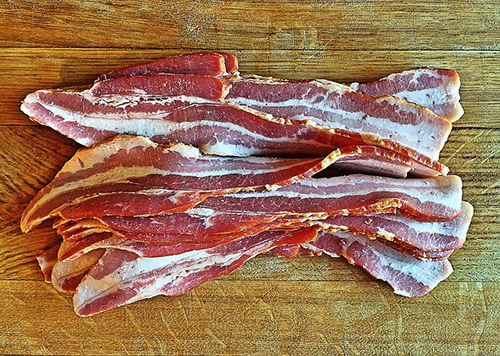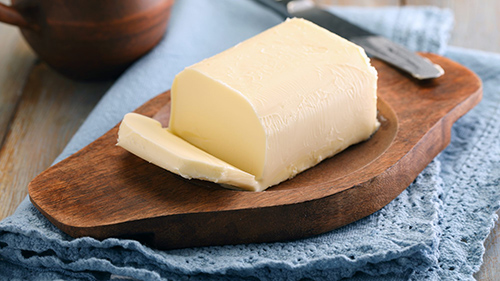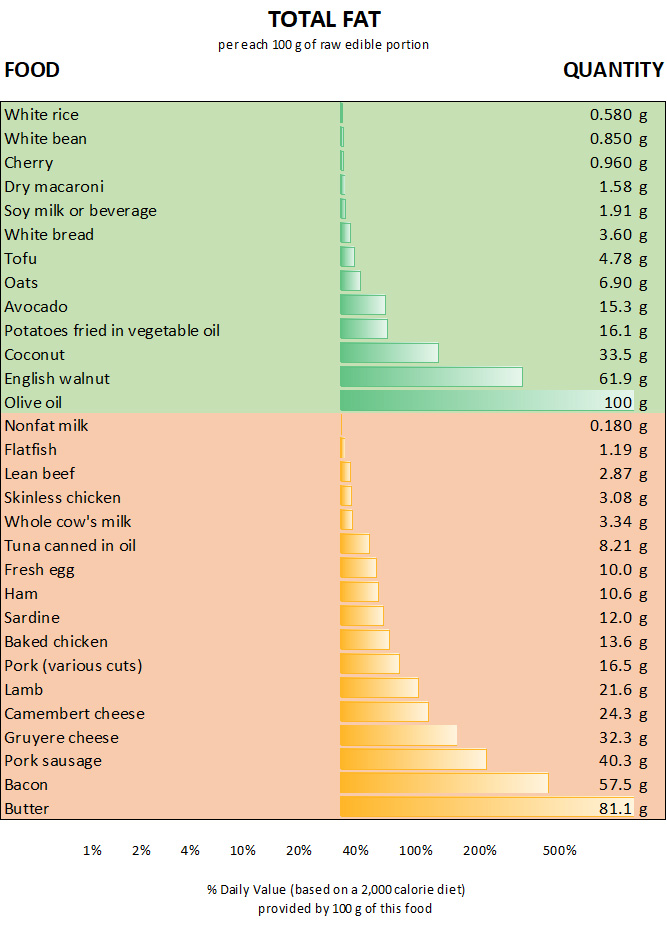Contents

The problem with dietary fats is not their lack but rather their excess, which is harmful even where vegetable fats are concerned. The following chart will list a variety of foods high in fat content.
Chemical composition of fat: the fats in all foods are composed primarily of triglycerides, a type of simple lipid composed of glycerin and fatty acids. The quality and properties of fats depend on the type of fatty acids they contain.
FAT SOURCES:
Plant-based foods, in their natural state, generally contain little fat, except for oil-bearing nuts. Vegetable fats have several advantages over animal fats:
- They are predominantly unsaturated fatty acids, which reduce blood cholesterol levels.
- They contain substances beneficial to health, such as lecithin, phytosterols, and vitamin E.

Animal-based foods and products are all high in fats, except nonfat milk and dairy products, lean fish, and very lean meat. There are various drawbacks:
- An elevated proportion of saturated fatty acids increases cholesterol production within the body.
- They contain cholesterol, which also contributes to increased blood cholesterol levels.
- They contain no vitamin E.
The function of fat: Fats act as a reserve energy source. They transport and facilitate the absorption of liposoluble vitamins in the intestine, such as A, D, E, and K.

Fat deficiency symptoms: The body can produce fats from carbohydrates and proteins; therefore, the lack of dietary fats is of little concern. The only fatty acids that cannot be synthesized within the body and must be supplied through the diet are linoleic, linolenic, and arachidonic acids, all abundant in nuts.
Consequences of excess fat: obesity, raised cholesterol levels. Excess fat in the diet is harmful, mainly when it is of animal origin.
The loss of fats during the processing of foods: degraded during frying.
Daily Value of Total Foods High in Fat
- For an adult, it is an amount of fat that supplies less than 30% of the total calorie intake. Excess fats, including vegetable fats, are harmful to health. For a 2000-calorie diet, this represents about 65 g of fats daily.
- A typical omnivorous diet usually provides about 40% of calories from fats (from 85 g to 100 g daily), representing a serious health risk.
Foods High in Fat

Saturated Fat
Chemical composition: Saturated fats are formed by triglycerides whose fatty acids are saturated. These are so named because all of their carbon atoms have their full complement of hydrogen atoms.
SOURCES:
Plant-based foods are low in saturated fats, with some exceptions, such as coconut and palm oils. These contain a particular type of medium-chain fatty acids (eight to twelve carbon atoms) that do not increase blood cholesterol levels.

Animal-based foods and products: These contain a great deal of saturated fat, particularly cured cheeses, sausages, and bacon.
FUNCTION:
Saturated fat is a reserved energy source. These fats are dense at room temperature and tend to be deposited within body tissues, particularly:
- Beneath the skin, causing obesity.
- On artery walls, causing arteriosclerosis.
Deficiency symptoms: None. The body does not need saturated fat. The less taken in, the better.
Consequences of too much saturated fat: Obesity, raised cholesterol levels, arteriosclerosis, and a variety of cancers. Saturated fats, particularly those of animal origin, are harmful to health.
Loss during the processing of foods: degraded during frying.
Saturated fats predominate in animal-based foods, while unsaturated fats come mainly from vegetables. Saturated fats increase the production of cholesterol in the body, while unsaturated fats lower it.
Daily Value (Acceptable Daily Intake) of Saturated Fat
- Ideal: 0 mg
- It should not represent more than 10 percent of the total calorie consumption for an adult.
- For a 2000-calorie diet, this represents about 20 g of saturated fat daily. An omnivorous diet usually provides nearly 30 g to 60 g of saturated fat daily. A much more healthful diet formed of plant-based foods, between 5 g and 10 g.
Top Food Sources of Saturated Fat

DISCLAIMER: All content on this website is presented solely for educational and informational objectives. It would be best to not rely on the information provided as a replacement for advice, diagnosis, or treatment from a qualified medical expert. If you are pregnant, nursing, or have any preexisting medical concerns, you should talk to your doctor before using any herbal or natural medicines.
REFERENCES
- George D. Pamplona-Roger, M.D. “Encyclopedia of Foods and Their Healing Power.” George D. Pamplona-Roger, M.D. Encyclopedia of Foods and Their Healing Power. Trans. Annette Melgosa. Vol. 1. Chai Wan: Editorial Safeliz, 2005. 404, 405. Print. [foods high in fat]
- American Heart Association (AHA): Provides guidelines on dietary fats and heart health, emphasizing the importance of replacing saturated fats with unsaturated fats to reduce heart disease risk. https://www.heart.org/
- World Health Organization (WHO): Offers advice on the intake of saturated and trans fats, recommending limits to reduce the risk of heart disease. https://www.who.int/
- Dietary Guidelines for Americans: Issued by the U.S. Department of Health and Human Services and the U.S. Department of Agriculture, these guidelines provide recommendations on dietary fat intake and its relation to overall health. https://www.dietaryguidelines.gov/
